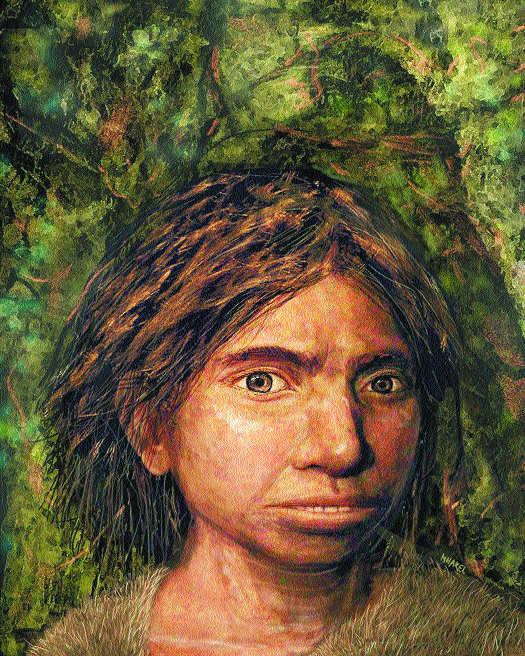First portrait of mysterious Denisovans drawn from DNA
| Date :21-Sep-2019 |
FOR the first time, scientists have offered a glimpse of how Denisovans -- ancient enigmatic human relatives -- might have looked like by analysing their DNA. Researchers from the Hebrew University of Jerusalem in Israel found that Denisovans likely had an elongated face and a wide pelvis similar to Neanderthals.

Portrait of Denisovans drawn from DNA.
They also found Denisovan-specific differences, such as an increased dental arch and lateral cranial expansion.
The study, published in the journal Cell, also found that 1,00,000 years ago anatomically modern humans, Neanderthals, and Denisovans may have co-existed in some parts of the world.
However, the entire collection of Denisovan remains today includes only a pinky bone, three teeth, and a lower jaw.
The researchers have reconstructed the appearances of these long-lost relatives based on patterns of presence of a chemical in their ancient DNA.
“In many ways, Denisovans resembled Neanderthals, but in some traits, they resembled us, and in others they were unique,” said co-author Liran Carmel of the Hebrew University. The Denisovans differed from modern humans and Neanderthals in about 56 anatomical features of which 34 were in the skull, according to the study.
The researchers added that the Denisovans also probably had wider skulls than that of modern humans or Neanderthals, and likely also had a longer dental arch. Genetic data from the samples were used to predict the anatomical features but instead of relying on DNA sequences, they extracted the information from gene activity patterns, the study noted.
The researchers used genome-wide DNA methylation -- chemical modifications influencing genes -- to understand their activity patterns. They compared the methylation patterns in DNA between the Denisovan, Neanderthal, and modern human samples to find how differently the genome of each group was methylated. The scientists also knew what those DNA level differences meant for anatomical features, the study noted. This, the researchers said, was based on what’s known about human disorders in which the same genes lose their function.
“By doing so, we can get a prediction as to what skeletal parts are affected by differential regulation of each gene, and in what direction that skeletal part would change--for example, a longer or shorter femur,” David Gokhman, first author of the paper, explained. “Studying Denisovan anatomy can teach us about human adaptation, evolutionary constraints, development, gene-environment interactions, and disease dynamics,” Carmel said.